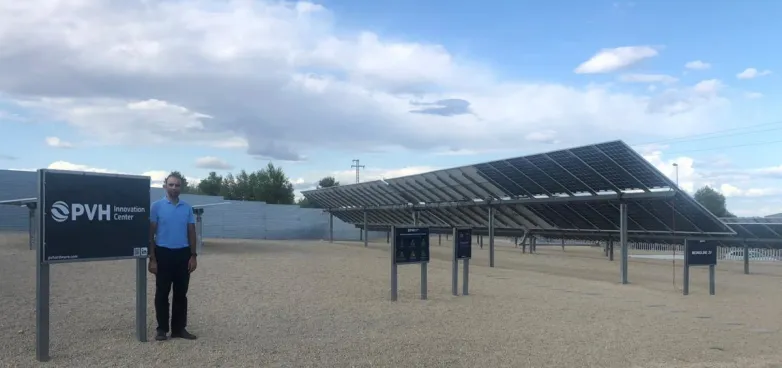Interview: PV Hardware chief operating officer Rodriguez talks heat dust and wind
Sep 11, 2019 09:07 PM ET
- Emilio J Garcia Rodriguez, from tracker manufacturer PV Hardware, spoke to pv magazine about the company’s activity in the Middle East and North Africa market. Dust, heat and heavy storms complicate the installation and operation of trackers.

PV Hardware is the biggest supplier of tracker systems to the Middle East. Are there any challenges specific to that market that need to be kept in mind?
According to reports by the likes of IHS Markit and Wood Mackenzie, PVH is positioned as a leading supplier in the Middle East and number three worldwide. Projects in the Middle East are truly large scale. The size of projects can easily reach 1 GWp so, from our experience, optimization is key to success. Not only having two fully optimized factories in Valencia but having key partners across the globe and specifically in the Middle East allows us to provide very competitive prices for our products which are specifically designed for this environment and client needs.
Your product portfolio includes bespoke desert trackers, why is that and how does this product differ from a standard version?
Unlike other manufacturers, at PVH we offer various types of solar trackers and configurations which adapt to different needs depending on project conditions. The climate in the Middle East is very harsh, with extremely high temperatures and humidity which can greatly affect the integrity of structures. One of the keys to our success is that we take great care in testing and designing our structures to be able to withstand large amounts of dust present in the air as well as the extreme temperatures.
It is also important to mention the material used in these projects; most parts of the tracker are made of Magnelis. This material, from ArcelorMittal, gives high resistance against corrosion and sand abrasion, much more than other materials such as pre-galvanized or galvanized steels.
Deserts are also places in which dust storms occur, what precautions do you take to ensure your trackers are safe during such events?
PVH is the leader for flutter-free structures, meaning that no matter the wind event that occurs at the site, the tracker is designed to stay in a stable position. We have provided tracking systems in regions with extremely high wind speeds, such as the islands of Mauritius.
Additionally, we provide back-up power solutions for Monoline (battery-based) and Axone (string powered) trackers, to ensure stowing capability in case of a power outage. And the wireless communication technology of our controllers enables long-range multicast wind alarm transmission so that all trackers react at the same time.
How aware are engineering, procurement and construction (EPC) contractors and project developers of wind issues and mitigation strategies?
Most of the EPC contractors and developers request, with some emphasis, to check the tracker against wind loads, for both static and aeroelastic phenomena such as flutter, vortex shedding…
Regarding static analysis, there seems to be a consensus in the sector about how to proceed, always considering dynamic amplification factors. But regarding aeroelastic failures and how to mitigate them, there are several methods of study that can give different results and this is not known in depth by EPC contractors and developers. In fact, during the webinar on Tuesday we will talk about this.
Can you briefly outline for me how you would work together with an EPC contractor to design and construct a plant?
The EPC contractor has to start providing us with information about the specific plant: topography, geotechnical information, layout, meteorological conditions etc. With this information we can optimize the design of the trackers for that particular plant.
PVH will supply all the components and equipment of the trackers and provide the EPC contractor with information to enable proper installation of the trackers during construction of the plant. PVH will also provide some supervision of the installation to help the EPC contractor and/or the installation subcontractor with their work. Once the installation is complete, PVH will commission and start the trackers to demonstrate that they perform to expectations.
Also read


